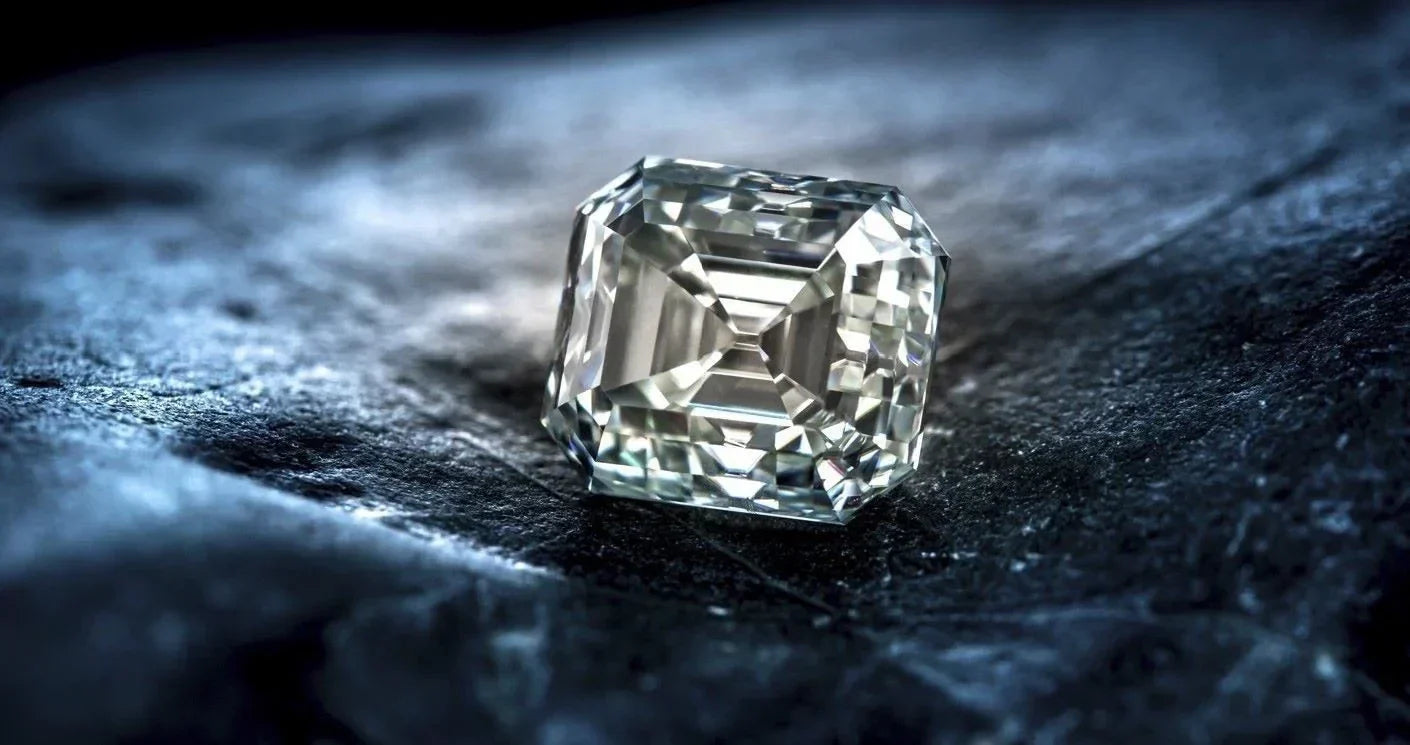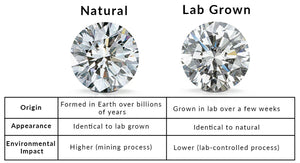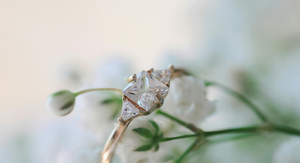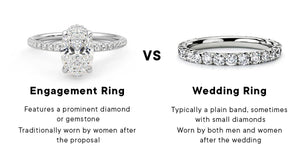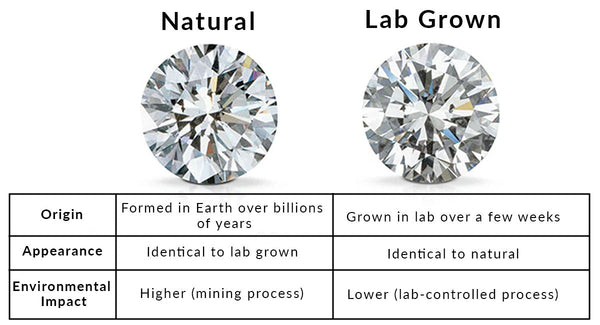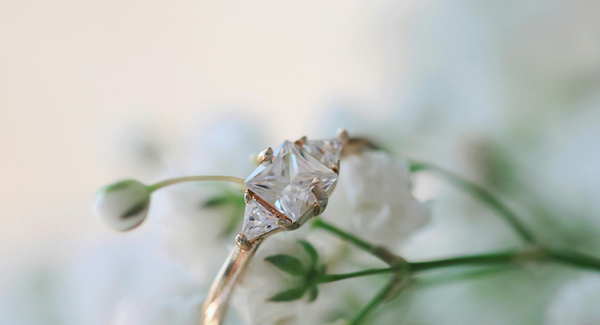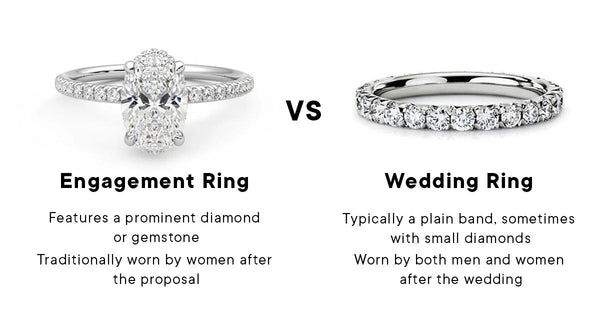Have you ever scrolled through endless rows of sparkling diamonds online, but none quite seem to capture your eye? Maybe you’re drawn to timeless elegance, but classic round brilliants feel a bit too common. Or perhaps you crave a touch of vintage charm that sets you apart from the crowd. If you find yourself nodding along, then the Asscher cut diamond might be your perfect match!
This captivating diamond boasts a unique square shape and a mesmerizing brilliance that whispers luxury without shouting. Unlike its round counterparts, the Asscher cut exudes a subtle sophistication, perfect for those who appreciate understated beauty. But beyond its captivating looks, there’s a whole world to discover about this historical gem.
History and Origins of the Asscher Cut
The Asscher name isn’t just associated with a diamond cut; it’s a legacy built on generations of expertise. The Asscher family rose to prominence in the world of diamonds, renowned for their ability to handle exceptionally large and rare stones. But their true mark on history came in 1902 when Joseph Asscher, born into this illustrious lineage, unveiled his revolutionary creation – the Asscher cut.
This groundbreaking design, a unique blend of the princess and emerald cuts, quickly gained recognition for its brilliance and clean lines. It became a symbol of the Art Deco era, perfectly capturing the spirit of the time with its geometric form and sophisticated elegance.
From Art Deco Icon to Hollywood Favorite
The Asscher cut’s popularity soared during the Art Deco era, finding a home in dazzling jewelry pieces that embodied the era’s bold aesthetics. This legacy continues today, with Hollywood celebrities like Elizabeth Taylor, Jessica Alba, and Kate Hudson all gracing their fingers with stunning Asscher cut diamond rings.
A Diamond Reborn: The Asscher Cut Today
While the Asscher cut’s patent expired during World War II, leading to variations in quality, the 21st century saw a resurgence of interest in this timeless gem. In 2001, Edward and Joop Asscher, Joseph’s descendants, further refined their great-grandfather’s creation. Utilizing advancements in diamond cutting technology, they introduced the Royal Asscher cut, boasting enhanced brilliance and precision.
Today, the Asscher cut remains a captivating choice for those seeking a diamond that transcends trends. Its unique blend of vintage charm and timeless elegance continues to captivate hearts, making it a perfect choice for the modern woman with a discerning eye for beauty.
Unique Features of the Asscher Cut
What makes the Asscher cut so special? Let’s explore some of its defining characteristics:
-
Square Shape with Cropped Corners: Unlike the round brilliant diamond’s circular form, the Asscher cut boasts a captivating square silhouette with slightly cropped corners. This unique shape adds a touch of geometric intrigue and vintage charm to any jewelry piece.
-
Step-Cut Faceting: In contrast to the brilliant cut’s triangular facets, the Asscher cut features a series of large, flat facets arranged in a step-like pattern. This faceting style creates a subdued brilliance with flashes of light called “hall of mirrors” effect, adding depth and mystery to the stone.
-
High Crown and Smaller Table: The Asscher cut has a noticeably higher crown (the top part of the diamond) and a smaller table (the top flat facet) compared to brilliant cuts. This combination contributes to the diamond’s subdued sparkle and emphasizes its geometric form.
Beautiful Symmetry and Proportions of Asscher Cut
The magic of the Asscher cut lies not just in its shape, but also in its proportions. A well-cut Asscher cut diamond exhibits:
-
Square or Near-Square Ratio: Ideally, the length-to-width ratio of an Asscher cut should be between 1.00 and 1.05. This ensures a visually pleasing square shape, although slight variations may still appear stunning.
-
Balanced Faceting: The step facets on the crown and pavilion (the bottom part of the diamond) should be symmetrical and distinct, creating a captivating “windmill” pattern when viewed directly from above.
-
Depth and Light Return: The depth percentage (a measure of the diamond’s thickness) of an Asscher cut typically falls between 60% and 67%. This allows for good light return without compromising fire and brilliance.
The 4 Cs of the Asscher Cut Diamond
While the Asscher cut’s uniqueness lies in its shape and faceting, the traditional 4Cs of diamond quality – Cut, Color, Clarity, and Carat Weight – still play a crucial role in determining its beauty and value.
-
Cut: As discussed earlier, the cut of an Asscher cut diamond is crucial for its brilliance, fire, and overall beauty. Look for a well-proportioned stone with a symmetrical faceting pattern.
-
Color: Since the Asscher cut has larger, open facets, clarity becomes even more important. Consider opting for a higher color grade (G or higher) to ensure a whiter and more brilliant appearance.
-
Clarity: Due to the larger facets revealing more of the diamond’s internal characteristics, it’s wise to choose a clarity grade that minimizes the visibility of inclusions (tiny imperfections). VS2 or higher is generally recommended for Asscher cut diamonds.
-
Carat Weight: The carat weight refers to the diamond’s size. Remember that asscher cut engagement rings tend to appear slightly smaller than their carat weight suggests due to their faceting style.
Asscher Cut Versus Other Diamond Cuts
Choosing a diamond can be overwhelming, especially when faced with an array of stunning shapes, each seemingly similar yet distinct. If you’re drawn to the Asscher cut, chances are you’ve considered a few other dazzling options. But fret not, we’re here to break down the key differences between the Asscher cut and its closest competitors, making your diamond decision a breeze! Remember, our expert gemologists are always happy to chat – feel free to reach out if you need personalized guidance in finding the perfect diamond that reflects your budget, style, and story.
Emerald Cut
The “square emerald cut” moniker sometimes used for Asscher cuts highlights a core similarity – both boast a near 1:1 length-to-width ratio and a step-cut faceting style with blunted corners. However, the Asscher cut distinguishes itself with a sharp culet (the bottom facet) compared to the emerald cut’s flat, elongated culet. This pointed detail in the Asscher cut draws the eye to the diamond’s center, creating a mesmerizing depth that captivates many.
Princess Cut
The silhouette might be the initial attraction that pits the Asscher cut against the princess cut. However, delve deeper, and you’ll discover their true differences. While both possess a square-ish shape, the Asscher cut sports cropped corners and boasts fewer, larger facets. This translates to a mesmerizing step-cut brilliance that draws attention to the diamond’s clarity, making it a haven for showcasing a flawless stone. Conversely, the princess cut, with its intricate faceting, is designed to maximize brilliance. For those seeking maximum sparkle, fire, and scintillation, the princess cut might be the champion.
Cushion Cut
Similar to the princess cut comparison, the Asscher cut tends to shy away from the brilliance game when pitted against the cushion cut. Cushion cuts, like the princess cut, are brilliantly cut, featuring more facets that reflect light back to the viewer’s eye. But shape also plays a role in this brilliance battle. The Asscher cut boasts clipped, blunt corners, while the cushion cut embraces a softer, rounded shape. This arching design makes the cushion cut a favorite for brides seeking a delicate, feminine aesthetic. The Asscher cut, on the other hand, leans towards architectural elegance. Its straight lines and large, clear facets cater to those who appreciate simplicity, sophistication, and a touch of vintage charm.
Setting an Asscher Cut Diamond
When it comes to choosing the setting for your Asscher cut diamond, the ultimate decision rests with you. After all, it’s the ring you’ll be wearing every day! But fret not, we’re here to guide you through the standard settings for Asscher diamonds and help you create a ring that truly stands out.
Solitaire Setting
The Art Deco era, when Asscher cut diamonds first rose to prominence, continues to inspire many with its elegant simplicity. This translates beautifully into the solitaire setting, where the clean lines and obvious step cuts of the Asscher cut take center stage. Here at King of Jewelry, we find that solitaire settings shine particularly brightly with a 2 carat Asscher cut diamond ring. The larger the stone, the more breathtaking its clarity becomes.
Halo Settings
If you desire extra sparkle and fire, halo settings can be a stunning choice for an asscher cut diamond ring. A halo of smaller round brilliant diamonds encircles the center stone, creating an illusion of a larger diamond and adding a touch of glamour.
Craving a Distinctive Look? Explore Your Options!
If a touch of individuality is what you desire, there are endless ways to personalize your ring. One of our favorite ways to experiment with style is by venturing beyond the traditional Art Deco influence. Here’s a secret weapon: the power of metal selection. Did you know that a seemingly small choice between 14K and 18K rose gold can significantly alter the look of your asscher cut engagement rings? For instance, a 14K rose gold setting will showcase a more pronounced pink hue compared to 18K, which offers a subtler blush. This difference is due to the varying copper content in the gold alloy.
Conclusion
Have you ever wondered if there’s a diamond cut that exudes timeless elegance with a touch of vintage charm? Look no further than the Asscher cut. This captivating diamond boasts a unique square shape, step-cut faceting, and a subtle brilliance that sets it apart from the crowd. Whether you’re crafting a stunning engagement ring or a dazzling pendant, the Asscher cut diamond can add a touch of sophistication and personality to your jewelry collection.
Ready to find the perfect asscher cut diamond ring for you?
Our GIA-certified gemologist at Precious Carbon is here to help! We offer a vast selection of high-quality Asscher cut diamonds, along with personalized guidance to choose the stone that aligns with your style and budget. Contact us today.
